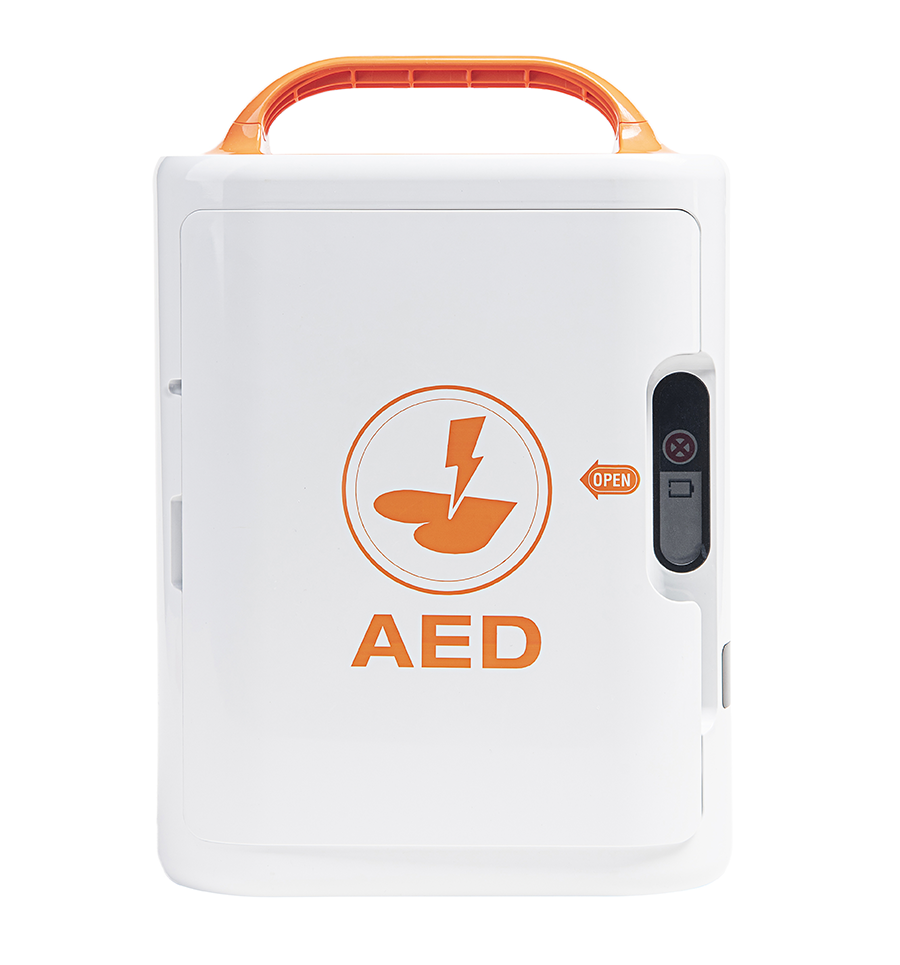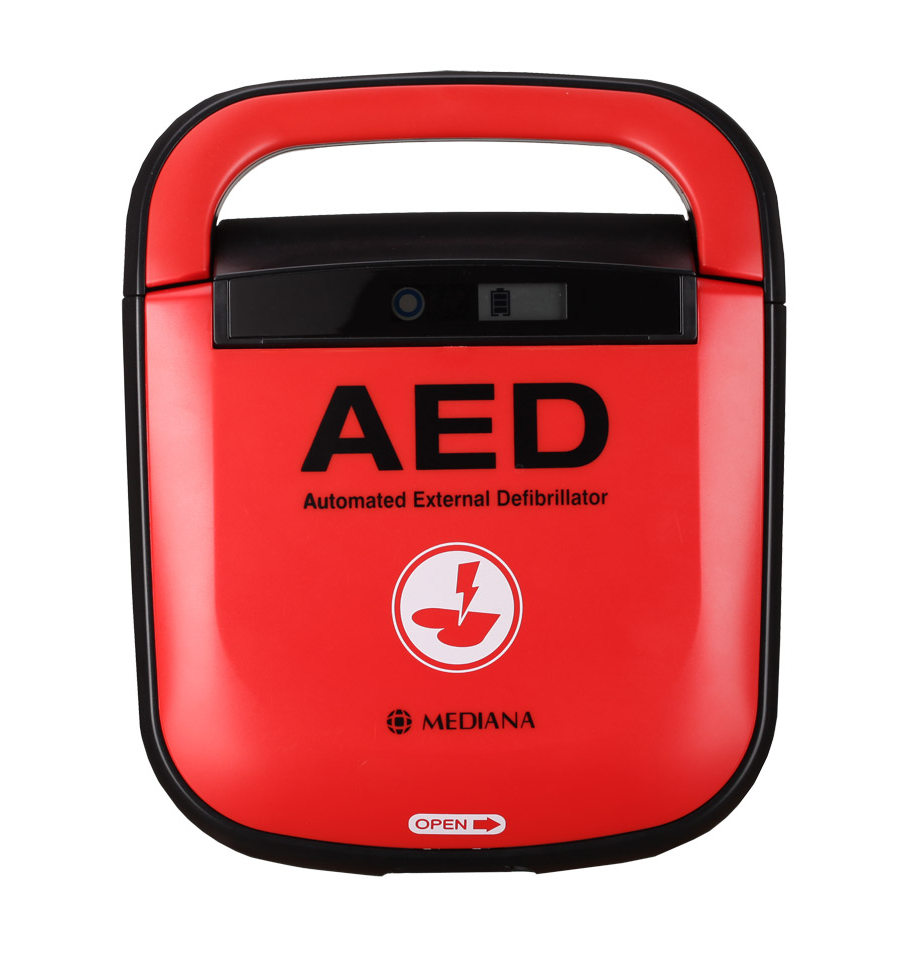
PRODUCTS
AED
-
A16
-
A15
-
T16
-
T15
A16
Comprehensive Solution for your needs in Critical
and Intermediate Care
- Semi-automatic or full-automatic operation
- 200joule impedance compensated BTE waveform
- Patient impedance range: 25~200ohm
- Equipment weight: 1.97kg
- Waterproof, dustproof rating: IP55
- Adults/Pediatric patient mode can be selected and energy changes automatically.
- Built-in three-language voice prompt selection (voice group can be specified)
- Pace pulse detection and rejection function is standard.
- Full Automatic function without Shock button enhances usability and shortens the time of emergency
- CPR feedback function enables effective CPR.
- Pads quality check function enhances ready to use and advances service.
- Voice recording function enables to check what kind of on-site actions were done.
- LCD indicators provide intuitive instrument status and battery level.
- Pre-connected pads allow quick attachment to the patient, reducing time to defibrillation.
Intended Use for the AED
Note: The intended patient populations are adult and pediatric (infant-child) (between 1 and 8 years or less than 25 kg (55lb)) can be treated with the appropriate pads.
Note: If you have concerns about your health or an existing medical condition, talk to your doctor. A defibrillator is not a replacement for seeking medical care.
Where can it be used?
The intended environment to use the AED includes home healthcare, public space and hospital. The public space is a social space that is generally open and accessible to people. Roads (including the pavement), public squares, parks, subway station, government buildings, beaches, public libraries, privately owned buildings or property opened to public/visible from sidewalks and any shared spaces of automobiles and other vehicles are typically considered public space. Hospital use typically includes areas such as general care floors, operating rooms, special procedure areas, intensive and critical care areas within the hospital. Hospital-type facilities include physician office-based facilities, sleep labs, skilled nursing facilities, surgical centers, and sub-acute care centers.
Who can use it?
You cannot use the AED to treat yourself. The AED talks the user through each step of treating someone who is in SCA. However, anyone who might use the AED should review the training materials that come with it or contact your local authorized supplier or Medical technical support, and should be trained in cardiopulmonary resuscitation (CPR). Responding to SCA may require the user to kneel.
A15
Comprehensive Solution for your needs in Critical
and Intermediate Care
- Semi-automatic operation (Adult/Pediatric)
- Adult/Pediatric Mode Switch
- Quick Start Power the A15 by using the Open Lid Switch
- 2015 AHA / ERC Guidelines
- Battery Capacity 4.2Ah/15V(200shocks or 10hr monitoring)
- Voice prompt, Action Icon(LED) Indicator, Status LCD
- Status indicator : self test (fail/pass), battery level, Temp, condition
- Self-test
- POST(Power On Self Test), Periodic test(daily, weekly, monthly), BIST(Battery Insertion Self Test)
- SD card, IR communication support
- Event review PC software (Option)
Intended Use for the AED
Note: The intended patient populations are adult and pediatric (infant-child) (between 1 and 8 years or less than 25 kg (55lb)) can be treated with the appropriate pads.
Note: If you have concerns about your health or an existing medical condition, talk to your doctor. A defibrillator is not a replacement for seeking medical care.
Where can it be used?
The intended environment to use the AED includes home healthcare, public space and hospital. The public space is a social space that is generally open and accessible to people. Roads (including the pavement), public squares, parks, subway station, government buildings, beaches, public libraries, privately owned buildings or property opened to public/visible from sidewalks and any shared spaces of automobiles and other vehicles are typically considered public space. Hospital use typically includes areas such as general care floors, operating rooms, special procedure areas, intensive and critical care areas within the hospital. Hospital-type facilities include physician office-based facilities, sleep labs, skilled nursing facilities, surgical centers, and sub-acute care centers.
Who can use it?
You cannot use the AED to treat yourself. The AED talks the user through each step of treating someone who is in SCA. However, anyone who might use the AED should review the training materials that come with it or contact your local authorized supplier or Medical technical support, and should be trained in cardiopulmonary resuscitation (CPR). Responding to SCA may require the user to kneel.
Features of AED Trainer
The AED trainer provides simulated shock delivery. It has no high-voltage capabilities, ensuring safety during training.
The AED trainer can be used with the infrared remote control. The remote control gives the instructor the ability to alter training scenarios while in progress, to test student response.
The AED trainer is pre-configured with 10 standard scenarios that simulate realistic sudden cardiac arrest episodes and 3 custom scenarios which can be changed by user.
The Semi-Automatic or Fully-Automatic can be switched by pressing the MEDIANA OPTION button on the remote control.
The shockable rhythm or non-shockable rhythm can be simulated immediately by using the remote control.
The shockable rhythm or non-shockable rhythm can be simulated immediately by using the remote control.
The AED trainer software lets user configure the custom scenario.
The micro SD card is required to change the custom scenarios.
Features of AED Trainer
The AED trainer provides simulated shock delivery. It has no high-voltage capabilities, ensuring safety during training.
The AED trainer can be used with the infrared remote control. The remote control gives the instructor the ability to alter training scenarios while in progress, to test student response.
The AED trainer is pre-configured with 10 standard scenarios that simulate realistic sudden cardiac arrest episodes and 3 custom scenarios which can be changed by user.
The 1 st scenario can be simulated at first by using the MEDIANA OPTION Button of the remote control. (HeartOn T15 only. The MEDIANA OPTION Button press is ignored on HeartOn T15-G4.)
The shockable rhythm or non-shockable rhythm can be simulated immediately by using the remote control.
The PC software lets you configure the custom scenario.
Connection to a PC serial port requires Mini USB to USB Cable.


